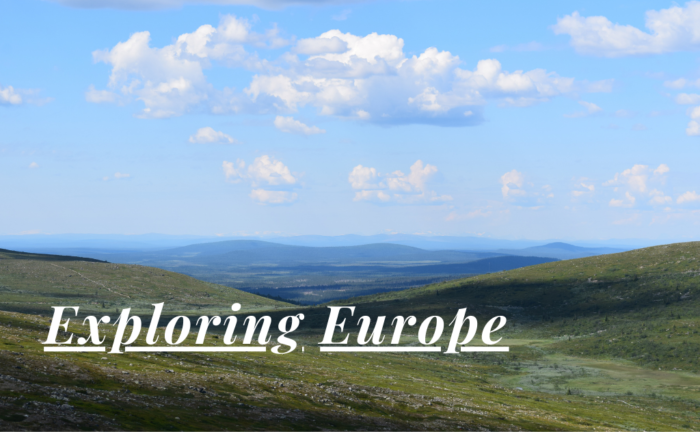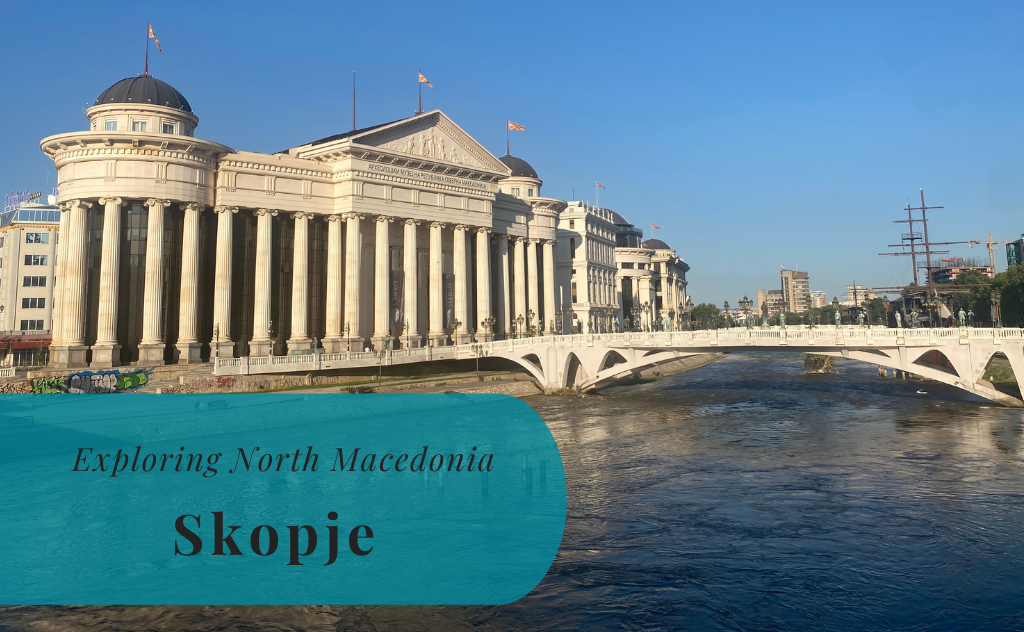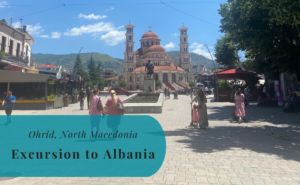Skopje (Скопје) is the capital of North Macedonia, as well as the country’s largest city. It lies in the northern part of this mountainous country at the plains known as the Skopje Basin. With a population of around 488.000 inhabitants, the city houses more than a quarter of the country’s population. It is estimated that the city’s demographics consist of around 60% Macedonians and around 20% Albanians. There are also large minorities of Roma, Turks, Serbs, and Bosniaks.
This is a city with a long history. Its grandiose center is an attempt to build on that history but is in most parts fairly new and built during the project Skopje 2014. North Macedonia gained its independence from Yugoslavia in 1991. The country has since worked hard with nation-building and Skopje is today a city where the attempt to build a national identity is visible. Especially when walking across the grand squares, seeing the huge statues and very decorative facades. Even with that, it is still a multi-cultural city with influence from all over the Balkan Peninsula.
Our Visits to Skopje
We have visited Skopje three times in the past, twice during 2023. Read more about our adventures in the city here. All photos in this post are from our visits to the city.
- Skopje, North Macedonia – Small Yet Spectacular
- Skopje, North Macedonia – Beginning of an Adventure
- Skopje, North Macedonia – Returning from Ohrid
- Skopje, North Macedonia – Exploring the Capital
- Skopje, North Macedonia – Good Bye to the Balkans
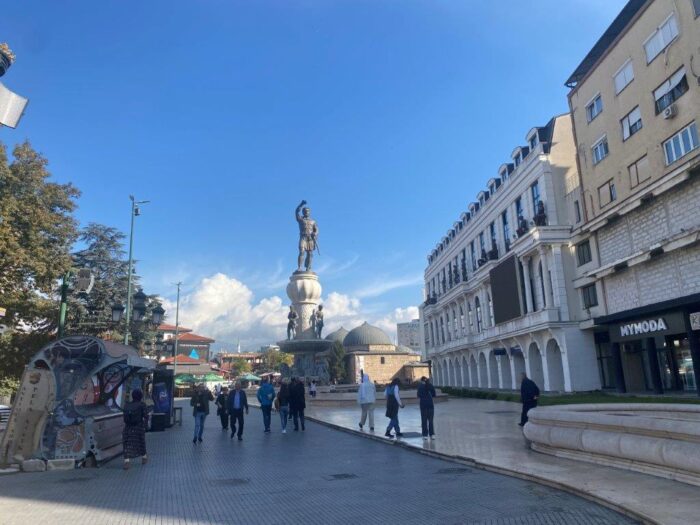
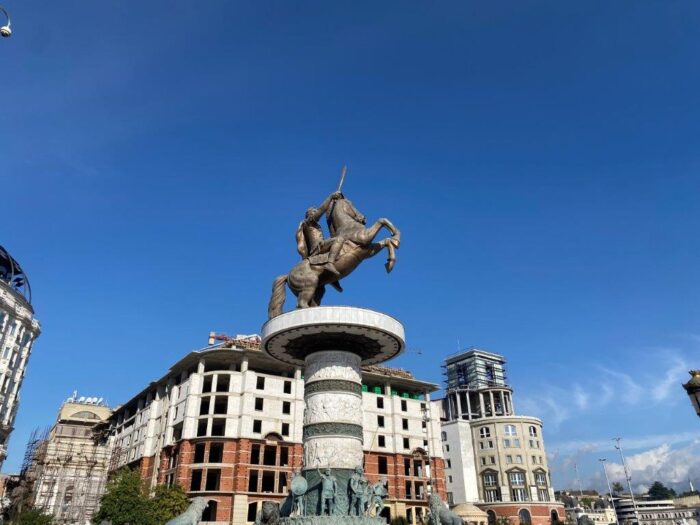

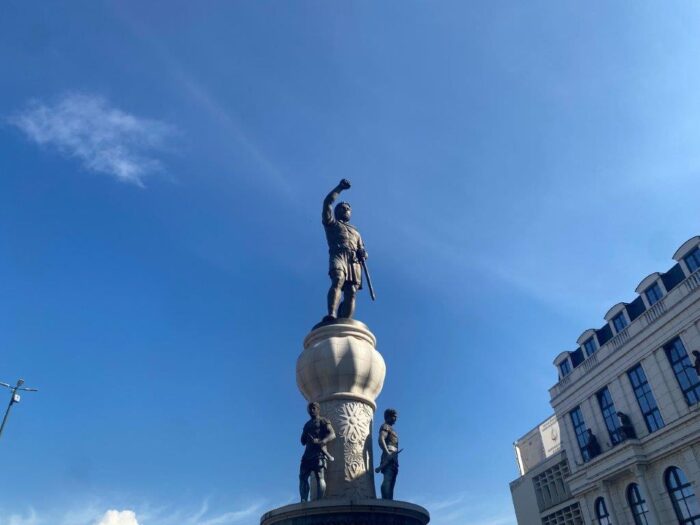
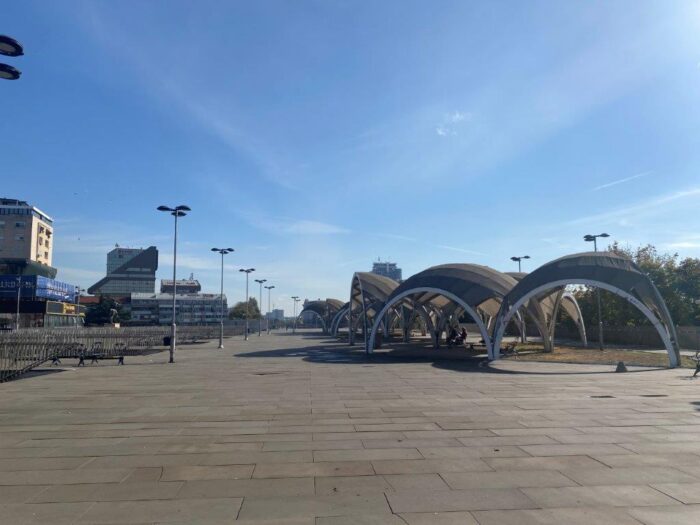







A Short History of Skopje
The Latin name Scupi is known from written sources dating back as far as the 2nd century. The Slavic name eventually became Skopje, which was the official name during the Middle Ages. The area has been inhabited for several thousand years and it eventually became a part of the Roman Empire a bit more than 2000 years ago. During Roman rule, it became the location of a military base and its first church is believed to have been built already in the 4th century.
Centuries of Foreign Rulers
Earthquakes have played an important part in the city’s history, or rather a devastating part. The city has been rebuilt several times as the earthquake of year 518 was not going to be the last. The Roman and later Byzantine Empires were followed by several new rulers of the city. Skopje was even for periods the capital of the First Bulgarian Empire and later the Serbian Empire. That was all before the Ottoman conquest in 1391. Another earthquake occurred in 1555 that destroyed a large part of the city. The city prospered for periods between the disasters, but disasters did not only include earthquakes. The city was burned to the ground in 1689 after being conquered by the Habsburgs during the Great Turkish War.
A Part of Yugoslavia
Skopje became a part of Serbia in 1913 and then a part of the Kingdom of Serbs, Croats, and Slovenes after the First World War, later known as Yugoslavia. The city was occupied by Nazi Germany during the Second World War and was liberated in 1944. The war had resulted in the city’s entire Jewish population being deported to the Treblinka Concentration Camp in Poland. Following the war, Skopje became the capital of the Socialist Republic of Macedonia within Yugoslavia and would stay like that until the North Macedonian independence in 1991. But before that, the city would once more be leveled by a new earthquake in 1962. In addition to killing more than one thousand people, the earthquake also destroyed most of the historical buildings in Skopje.
Independence of North Macedonia
The city was rebuilt after the earthquake but it was done so with the modern buildings of the 1960s. It would take until the 2010s and the project Skopje 2014 before the city redeveloped with the ambition to re-establish the historical atmosphere of the city with buildings in a neoclassical style. It was at this time that a large part of the center of Skopje was rebuilt, with 136 new structures being built between 2010 and 2014.



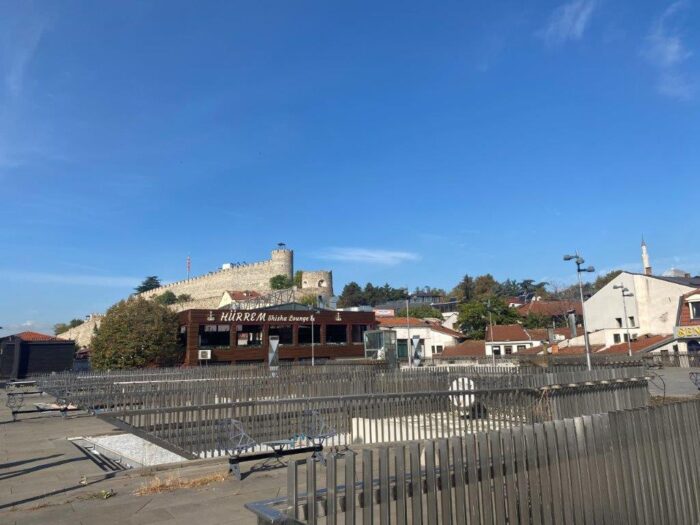








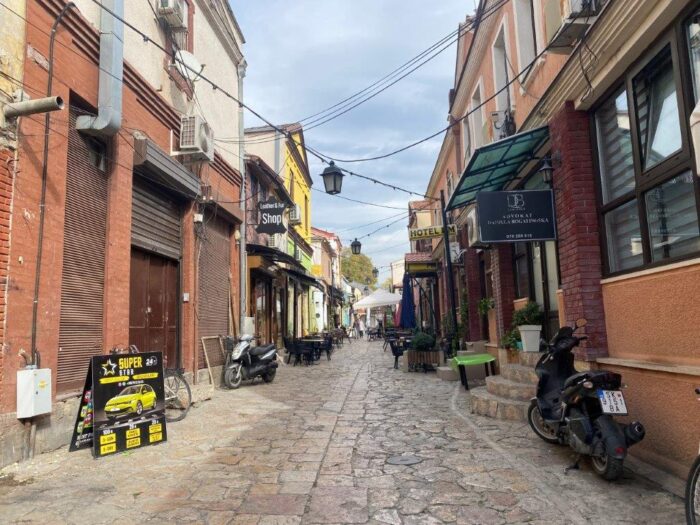



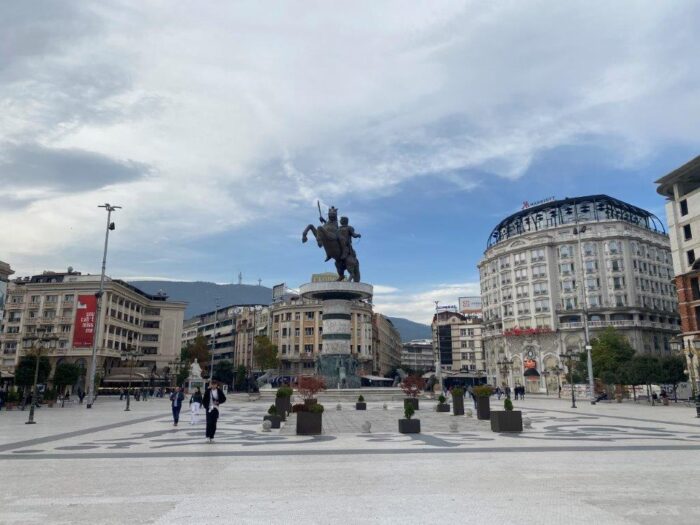

Things to Do and See
Exploring Skopje is like walking through a city rebuilding its past. The neoclassical style is returning and the center is majestic in so many ways that it can be compared to someone compensating for something. Near the center there are a lot of buildings from the socialist era and the modernist style is sometimes very impressive. That is at least true for the Post Office of Macedonia. Otherwise, the main sights can be found along the banks of the Vardar River or around Macedonia Square and the Old Bazaar.
Surrounding the center there are also several shopping centers and there is also the City Trade Center right next to Macedonia Square. Close to the center is the Ramstore Shopping Center and Shopping Center Vero, as well as the newly opened Diamond Mall. A bit further from the center are the much larger shopping centers of Skopje City Mall and East Gate Mall. These are just a few of the shopping possibilities in Skopje and there is, of course, also the Old Bazaar.
Let us have a look at a few of the main sights in Skopje.
Macedonia Square
Macedonia Square is the main square of the city and has a huge statue of Alexander the Great at its center. The statue itself is a great meeting point if you need somewhere to meet up after a few hours of exploring the city. From here there are plenty of pedestrian streets heading off in all directions and there are plenty of restaurants around. There is also a bit of shopping available at the nearby City Trade Center. Much of what you can see on and around the square has been built since the project Skopje 2014 began in 2010. The nearby Triump Arc Porta Macedonia was also a part of the project and was completed in 2012 and is in memory of the country’s 20 years of independence.
Vardar River
Vardar River is a river flowing through North Macedonia and Greece before reaching the Aegean Sea at Thessaloniki. When visiting Skopje it is not the river itself that is the sight to explore, instead, it is the two banks of the river that include some of the city’s main sights. The most historical sight here is probably the Stone Bridge which was built already in 1469. New constructions across the river include The Bridge of Civilisations and The Bridge of Art, both very decorative bridges. Along the northern banks of the river, you will find the majestic buildings of the Macedonian National Theater, the Museum of the Macedonian Struggle for Independence, and the Archaeological Museum of Macedonia. There are pedestrian paths on both banks of the river and along the southern bank, there are also many restaurants near Macedonia Square to enjoy.
Old Bazaar
The Old Bazaar, or the Old Market, can be found if you walk north from Macedonia Square and across the Stone Bridge. Along the way, you will also walk past the huge monument of Philip II of Macedonia. The Old Bazaar is home to many restaurants, cafés, and shops. It is a must-see when visiting the city. The merchant history here goes back to at least the 12th century and even though it has been damaged in the many earthquakes and other disasters, it still flourishes. Today it is mainly a tourist attraction, but it has been able to keep some of the historical atmosphere.
Skopje Fortress
Skopje Fortress, or the Kale Fortress, has seen better days. This is today mainly a ring wall with fortification towers. Its interior has not been restored after it was destroyed during the 1963 Earthquake. It is still possible to visit the interior of the walls, but it is as of 2023 not much to see. The wall and its towers are still an impressive sight when walking across the Stone Bridge or enjoying the view of the fortress from one of the many places from where it is visible.
Excursions from Skopje
There are plenty of possible excursions from Skopje with many places nearby for day trips. Two places that are heavily marketed are the Millennium Cross on top of the Vodno Mountain and the Matka Canyon. The Millennium Cross is visible from the city center and other viewpoints around the city. Nearby smaller cities to explore include the cities of Kumanovo and Tetovo. Longer domestic excursions to the lake resort town of Ohrid are also a recommended option. If you want to explore more of the Balkans, then the border with Kosovo is just a short distance north of Skopje. It is possible to go on a day trip to Kosovo and visit the capital of Pristina and maybe also the city of Prizren. Other neighboring countries include Serbia, Bulgaria, and Albania.


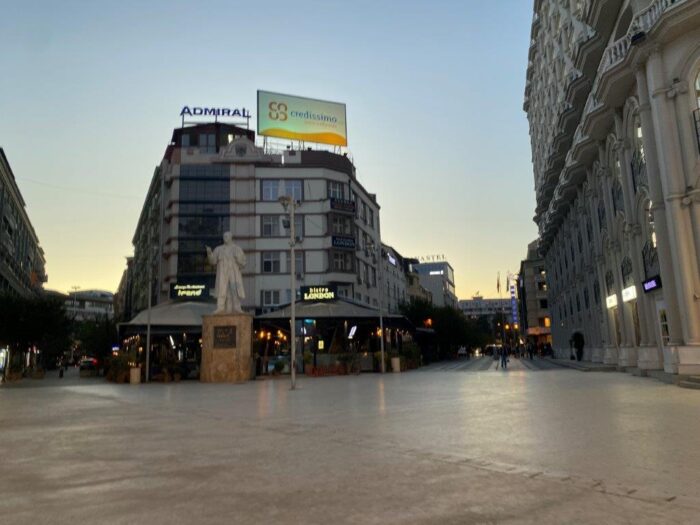





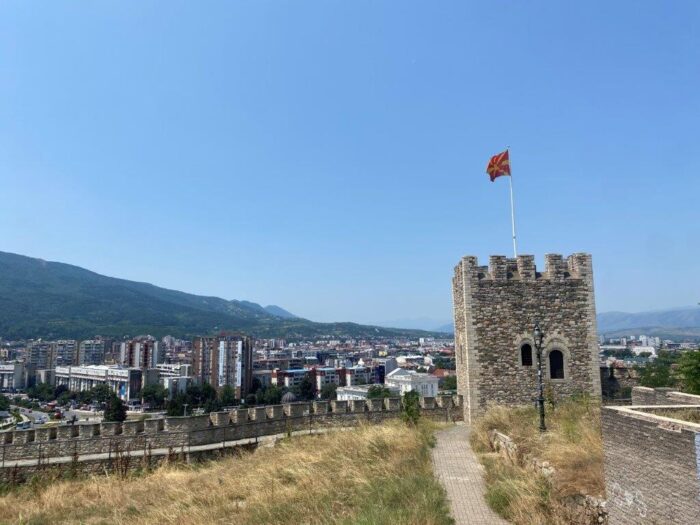
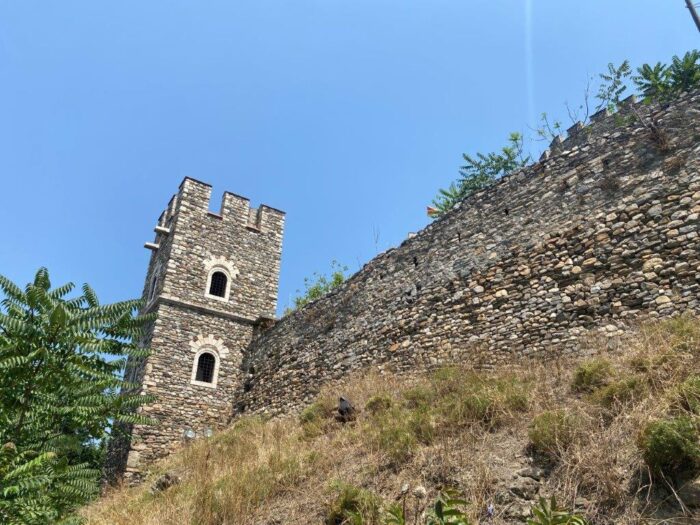
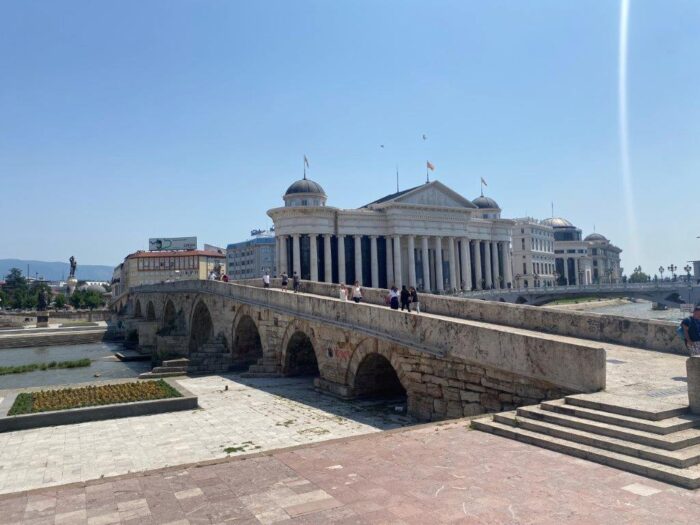
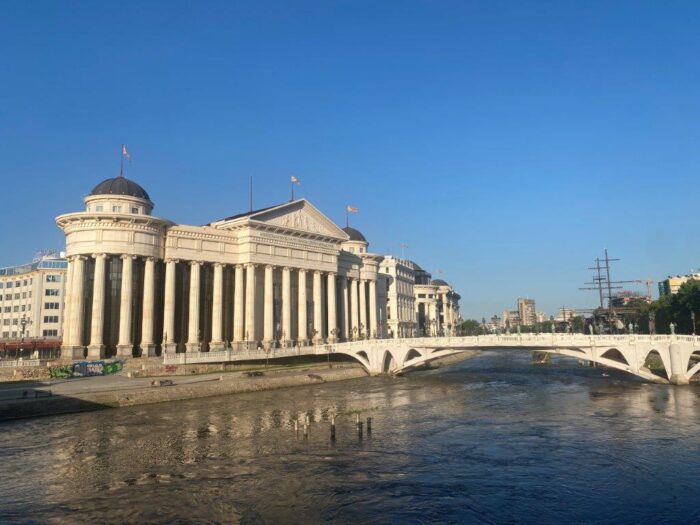

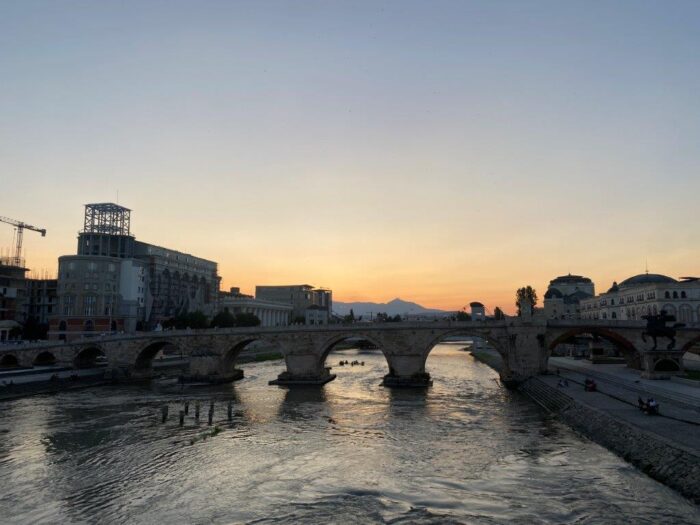

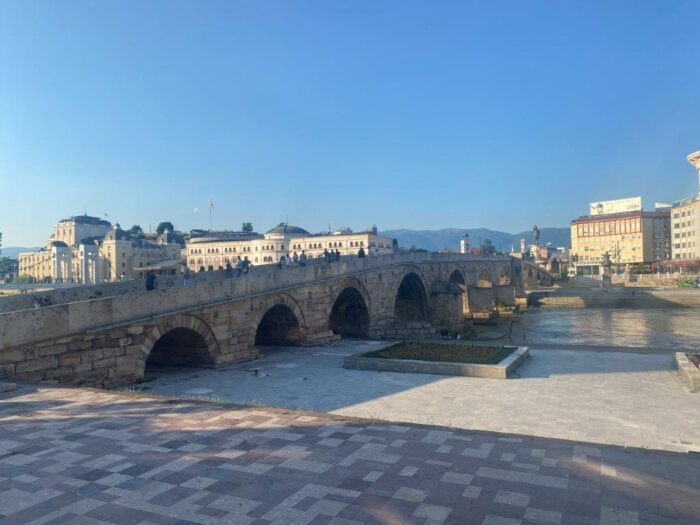


How to Get to Skopje
- Flights: The closest major airport is Skopje International Airport (SKP), located to the east of the city.
- Car: Skopje in the central part of North Macedonia with several of the country’s major roads passing by the city.
- Train: There are domestic and international trains from the city’s train station.
Looking to Explore more of North Macedonia and Europe?

